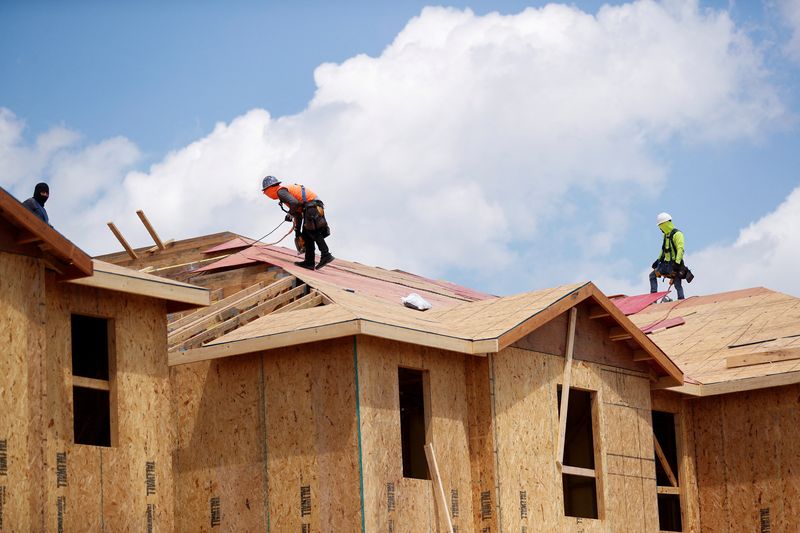By David Lawder
WASHINGTON (Reuters) -The U.S. Treasury said on Wednesday it will allow state, local and tribal governments more flexibility to use COVID-19 rescue funds to boost the supply of affordable housing, including permission to issue direct long-term project loans.
The changes for the $350 billion State and Local Fiscal Relief Fund program aim to fill a financing gap for affordable housing projects, allowing them to be more easily developed, especially those that are eligible for the Treasury's Low-Income Housing Tax Credit.
"The skyrocketing cost of rent in communities nationwide is one of the biggest burdens on family budgets, and increasing housing supply is one of the best ways to tackle inflation," U.S. Senate Finance Committee Chairman Ron Wyden said in a statement.
The Oregon Democrat added that Treasury's changes met his requests to stretch American Rescue Plan dollars for more affordable housing to "get projects off the ground."
Treasury had consulted with state and local housing officials and members of Congress, who asked for more flexibility and broader uses of the funds. The new guidance allows state, local and tribal governments to fully provide loan principal for projects that meet certain criteria.
The Treasury also said it is expanding the range of uses of the funds for projects beyond those currently allowed under two major Department of Housing and Urban Development programs to additional federal programs from multiple agencies.
U.S. Deputy Treasury Secretary Wally Adeyemo said Treasury is making clear that state and local funds may be used to finance development, repair and operation of any affordable rental housing unit that provides long-term affordability of 20 years or more to households at or below 65% of the local area's median income level.
Treasury had previously called on states and municipalities to use more of their COVID-19 allocations to address a severe shortage of affordable housing..

"The thing that I have seen more and more is that there are a number of affordable housing projects today that started during the pandemic that have become more expensive, and there's a need for additional gap financing," Adeyemo told reporters. "And that's hard to find."
Through March 31, over 600 communities had budgeted $12.9 billion from their state and local funding allocations to meet housing needs and lower housing costs, including $4.2 billion for affordable housing development and preservation.